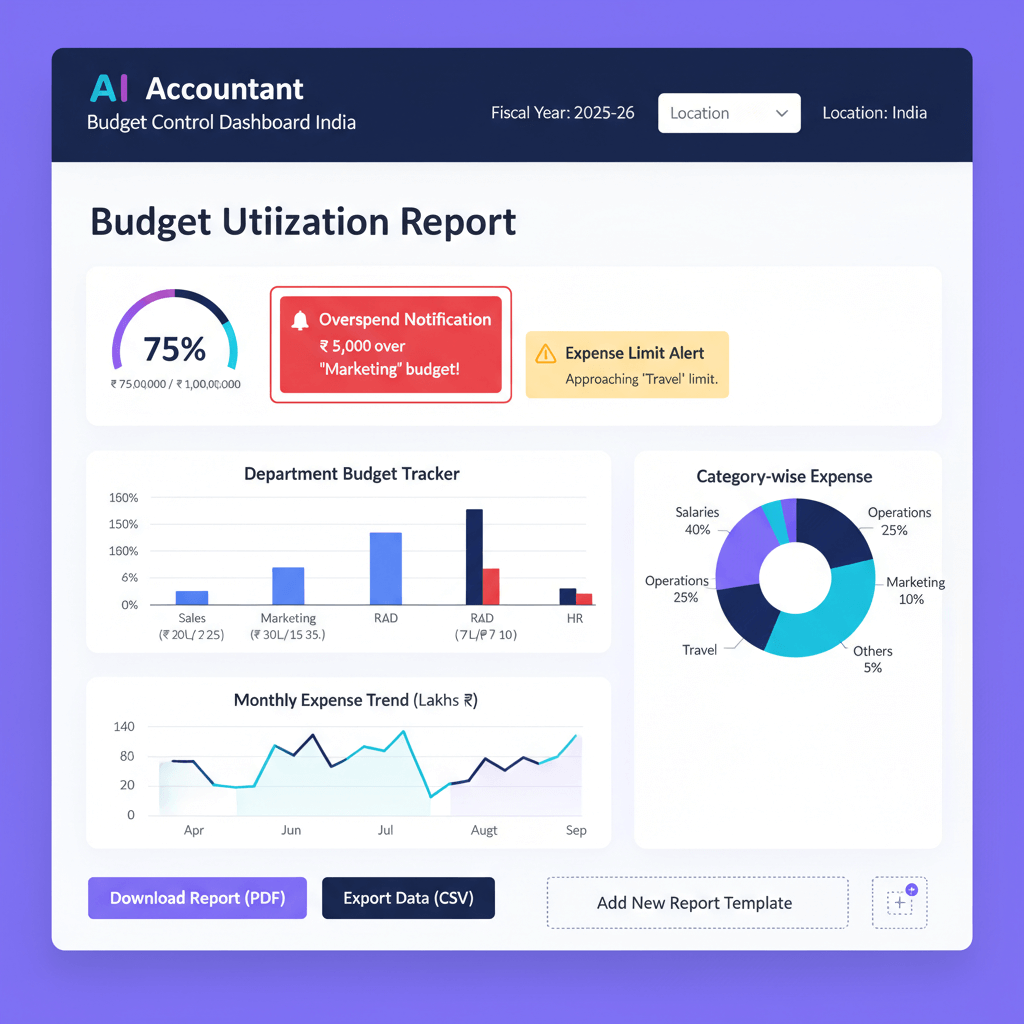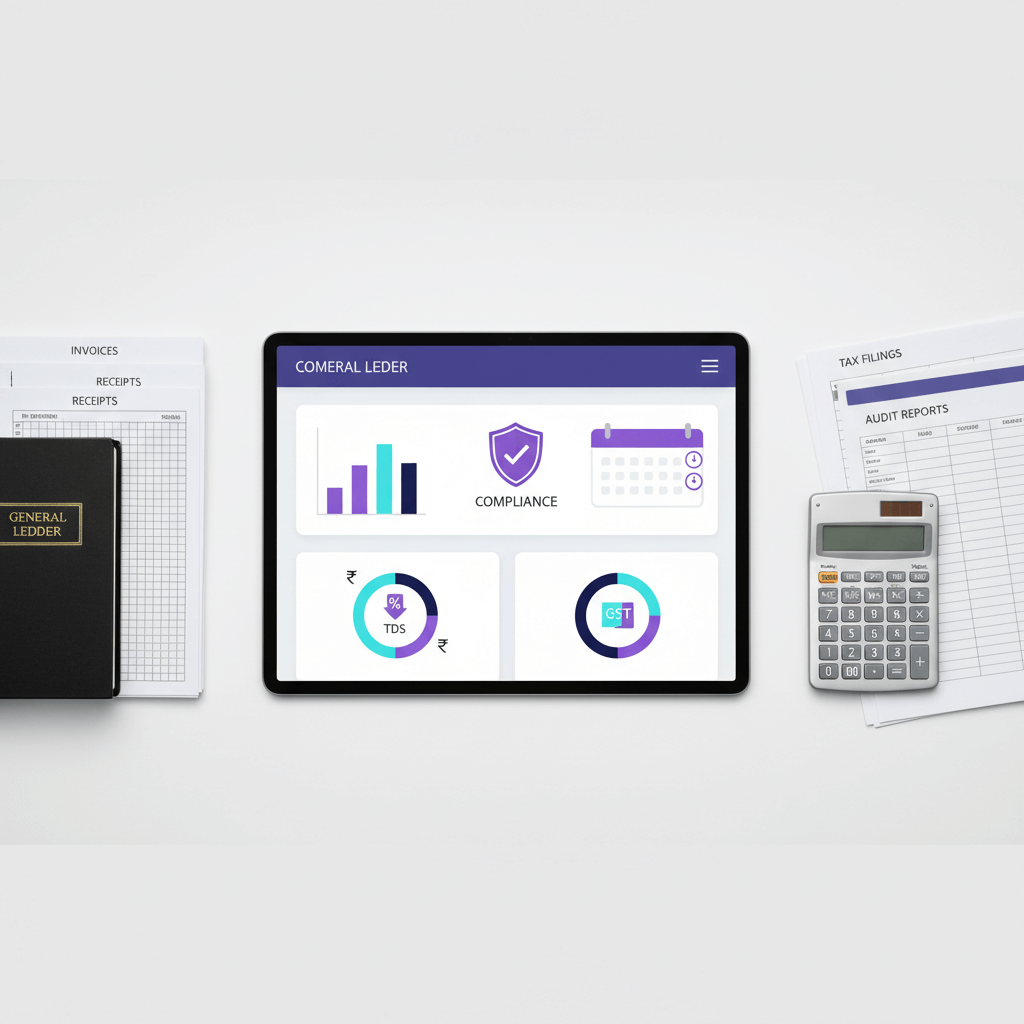Key takeaways
- CA firms must evolve from compliance to advisory-centric practices.
- Offering services like cash flow forecasting, KPI dashboards, and virtual CFO support creates premium, recurring revenue.
- Automation and AI tools free capacity for high-value analysis and proactive decision support.
- Strategic dashboard offerings become essential decision systems, not just visualization tools.
- Bundled advisory retainers strengthen client relationships and protect against fee pressure.
Table of contents
- Key takeaways
- Table of contents
- From Compliance-Focused to Advisory-Centric Practice
- Understanding the Shift Beyond Compliance
- The Strategic Dashboard Upsell for CA Firms
- FAQ
From Compliance-Focused to Advisory-Centric Practice
Traditionally, CA firms have focused on GST returns, audits, and routine filings. Today, the real growth opportunity lies in value added services by CA firms beyond compliance. By leveraging automation and data analytics, forward-thinking firms deliver strategic insights and proactive guidance that clients value—and will pay a premium for.
“When every CA firm offers the same GST filing service, clients choose on price. Advisory services shift the conversation from cost to value.”
- Cash flow planning for the next 90 days
- KPI dashboards for real-time performance tracking
- Virtual CFO support for strategic budgeting
- Due diligence and M&A readiness
- Process improvement and profit enhancement
Understanding the Shift Beyond Compliance
Automation tools now handle repetitive tasks, freeing CA teams to focus on interpretation, recommendations, and value-added analysis.
Cash Flow Forecasting and Management
Project inflows and outflows over rolling 90-day periods to prevent working capital crunches during growth phases or seasonal fluctuations. Automate forecasts with AI-powered cash flow forecasting.
Business Performance Dashboarding
Deliver monthly management reports with trends and key metrics such as gross profit margins, customer acquisition cost, inventory turns, and operational efficiency indicators. These dashboards become the foundation for executive decision systems.
Strategic Tax Planning Integration
Offer year-round tax strategy that aligns with business goals, including timing of purchases, entity structure optimization, and investment planning that considers tax implications.
Working Capital Analysis and Optimization
Analyze receivables aging, vendor payment schedules, and inventory levels to identify opportunities for improving days sales outstanding and negotiating better payment terms. Use working capital management tools to streamline the process.
Process Improvement and Profit Enhancement
Conduct operational reviews to uncover cost reduction, pricing optimization, and workflow improvements. Savings found often cover service fees many times over.
Fractional CFO Services
Provide budgeting support, KPI development, board presentation preparation, and capital planning for clients that need CFO expertise without a full-time hire. Learn more about virtual CFO services.
M&A Readiness and Due Diligence
Support business valuations, succession planning, and transaction preparation. Even if a deal stalls, insights gained often lead to operational improvements.
The Strategic Dashboard Upsell for CA Firms
Dashboards should be positioned as executive decision systems—your client’s monthly cockpit—rather than static visualizations. By pairing automated data insights with concise commentary, you become an indispensable advisor.
Positioning Your Dashboard Service
Frame the dashboard as essential business intelligence that prevents surprises and accelerates decisions. Highlight its role in early warning and action planning.
Practical Service Format
Deliver a one-page executive summary covering cash runway, profit trends, receivables aging, top overdue invoices, and budget variances. Include three recommended actions, a live dashboard link, and a 15-minute call each month.
Real-Time Use Cases That Matter
- Manufacturing clients addressing receivables aging issues before cash flow crises
- Retail clients managing inventory turns to avoid stock overhang
- Seasonal businesses planning for peak and off-peak cash requirements
Monetization Strategies
Offer dashboard services as a premium add-on with fixed monthly pricing or bundle them in an advisory retainer with quarterly strategy reviews. This creates predictable, recurring revenue while deepening client relationships.
FAQ
How can an AI Accountant streamline my recurring advisory services?
An AI Accountant can automate transaction categorization, reconciliation, and routine report generation. This frees your team to focus on high-value tasks such as interpreting results, crafting recommendations, and conducting strategy sessions that clients are happy to pay for.
What are best practices to integrate AI-powered cash flow forecasting in my CA practice?
Start by collecting accurate historical data, then set up rolling 90-day forecasts in your AI Accountant tool. Review forecasts monthly, adjust assumptions, and present actionable insights during client meetings to demonstrate immediate value.
How do I set pricing for dashboard services offered by my firm?
Consider your delivery costs, the competitive landscape, and the tangible client benefits such as reduced risk or increased profitability. Many firms use tiered pricing—basic, standard, and premium—based on the number of KPIs and depth of analysis.
Can I deliver fractional CFO services using an AI Accountant?
Yes. Use an AI Accountant to automate budgeting templates, KPI tracking, and board presentation decks. Allocate your human expertise to interpreting results, shaping strategy, and leading stakeholder discussions.
Which KPIs should I include in client performance dashboards using automation?
Common KPIs include gross profit margin, net cash flow, customer acquisition cost, inventory turnover, and days sales outstanding. Tailor the list to each client’s industry and strategic goals, and let your AI Accountant handle data updates.
Can an AI Accountant assist in M&A due diligence and how?
An AI Accountant can quickly analyze transaction histories, flag anomalies, and produce standardized reports for multiple business units. This accelerates data collection, letting you focus on valuation assumptions and deal structuring.
What automation tools complement advisory services and improve efficiency?
Tools like AI Accountant for transaction processing, cloud-based dashboards for real-time insights, and workflow platforms for task management can all integrate to streamline your advisory engagements.
How do I transition from compliance to an advisory-first model with minimal client churn?
Introduce advisory services gradually, starting with cash flow forecasting or monthly dashboard reviews. Prove value quickly, price reasonably, and blend advisory check-ins with routine compliance workflows.
What are common challenges in adopting technology for advisory accounting and how do I overcome them?
Challenges include data quality, staff upskilling, and change management. Address them by starting small, investing in training, and showcasing quick wins using your AI Accountant platform.
How do I ensure data security when using cloud-based AI tools like AI Accountant in my firm?
Choose providers with robust encryption, two-factor authentication, and compliance certifications such as ISO27001 or SOC 2. Regularly review access controls and maintain up-to-date security policies.

-01%201.svg)



